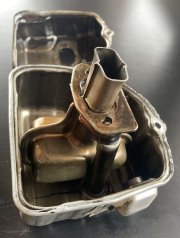80% is a wive’s tale, a guess, as every saw is different. Some are still narrower ported (because of skirt width or flange thickness limitations) than others are stock. In that case, 100-150?% is probably more beneficial.
Hp continues to go up with less restriction until 150-175%. Forgiveness on the dogs (perceived as torque) goes down the bigger you go. It’s all a trade off, gaining in one area without giving up too much in another.
Timing advance is completely separate and the 2 are not related nor required for one another. Advancing timing (if the stock ignition timing allows it) adds torque which usually results in more cutting rpm in a work saw setting. It usually hampers unloaded rpm or high rpm with light work conditions like limbing or possibly in a race saw application. Some saws love 10-12° of advance and some need retarded 5° from stock in order to allow them to rev. So the only “rule” is if you never try, you never learn












